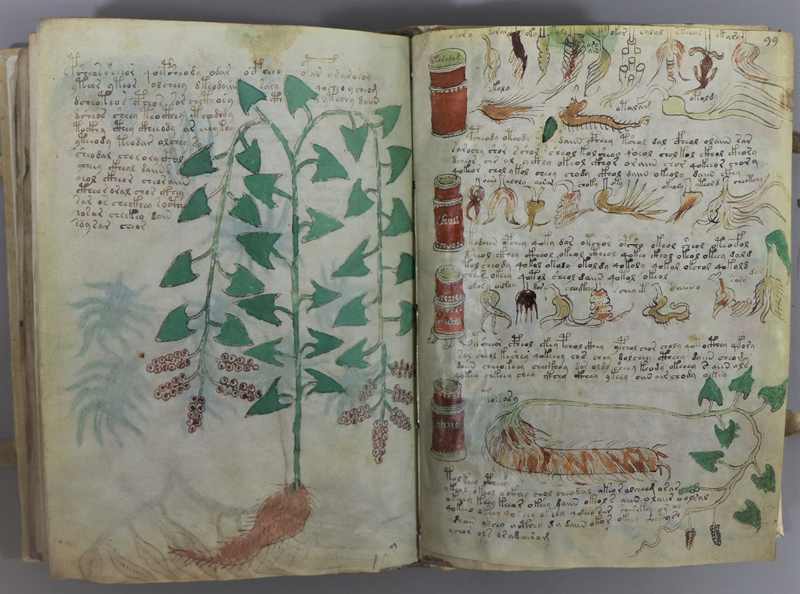It is amazing to imagine, but even in the 21st century, there is a book written in a language and script that scholars cannot understand. The Voynitch manuscript is a handwritten illustrated book, dated to the early 1400s. Named for Wilfred Voynitch, a book dealer who acquired the book from Jesuits priests in the early 20th century, the book is now owned by the Beinecke Rare Book and Manuscript Library at Yale. The manuscript is written in an encrypted text in an unknown language and includes illustrations of non-existent plants, astrological charts, and people. I learned about all this when I was invited to the first offering of a new workshop at Bruce Peel Special Collections.

Bruce Peel Special Collections has recently acquired a hand-made replica of the Voynitch Manuscript. According to Special Collections Librarian, Linda Quirk, “The Voynitch is one of the most studied and most mysterious of all manuscripts. There has been a lot of interest in getting a well-made facsimile so that faculty and students around the world can go to their own university library to see and experience it for themselves. Like other good quality facsimiles, this one is designed to replicate the original in every sense. It looks and feels and sounds and smells like the original because it is a full-size and full-colour reproduction, bound in the same manner and printed on the same material at the original, i.e. vellum. Vellum is made from animal skin and was routinely used for manuscripts and early printed books before paper eventually displaced it. Produced by a respected fine-art facsimile publisher in 2018, this one was published in a limited edition of 898 copies.”
This new workshop also offers a unique experience for participants, by presenting two scholar’s perspectives on the manuscript, from very different fields of study. English professor John Considine presented a historical and critical analysis of the provenance and contents of the manuscript. Accepting the 1404-1438 carbon-dating of the vellum pages, Considine looks closer at the illustrations and overall composition of the manuscript to infer potential areas of origin and possible subjects of the work. Comparing illustrations, book genres of the time and known authors who created similar works Considine offers a number of potential purposes.
Bradley Hauer, a Ph.D. student in computing science, and Professor Greg Kondrak of computing science present a second approach to Voynitch. Hauer’s research interests include identifying languages with artificial intelligence. He explained how deciphering the Voynich Manuscript is exponentially challenging. Aside from being unable to read the encrypted script of the manuscript or identify the original language, previous analyses of the Voynitch show that the text must also be intentionally encoded. This means that the script is unknown to us, the language is unknown to us, and the order of the letters in the words have been systematically scrambled in some way. Using the analyses of older European languages, his team used algorithms to analyze the Voynich Manuscript to try and determine its language.
This workshop reveals an intriguing manuscript, that the University community can now engage with better because of our facsimile. It also demonstrates the usefulness of both human reason and artificial intelligence, and how the two working together may be the way to formulating new understandings.
To register for this and other Peel Workshops, find more information here.
